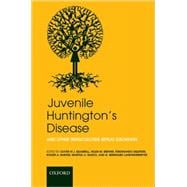
Note: Supplemental materials are not guaranteed with Rental or Used book purchases.
Purchase Benefits
What is included with this book?
| Dedication | p. v |
| Preface | p. vii |
| Foreword | p. ix |
| List of contributors | p. xv |
| Family experiences: Part I, Diagnosis and early stages | p. 1 |
| Family experiences: Part II, Later stages | p. 19 |
| The history of juvenile Huntington's disease | p. 33 |
| The clinical phenotype of juvenile Huntington's disease | p. 39 |
| Juvenile Huntington's disease: neuropathology | p. 51 |
| Molecular mechanisms in juvenile Huntington's disease | p. 79 |
| Juvenile Huntington's disease and mouse models of Huntington's disease | p. 101 |
| Clinical features of early and juvenile onset in polyglutamine disorders other than Huntington's disease: autosomal dominant cerebellar ataxias and dentatorubral pallidoluysian atrophy | p. 117 |
| The diagnostic challenge | p. 135 |
| The treatment of juvenile Huntington's disease | p. 151 |
| Psychosocial issues surrounding juvenile Huntington's disease | p. 167 |
| Challenges in assessment | p. 181 |
| Appendices: Proposed scales for juvenile Huntington's disease | p. 189 |
| JHD total functional capacity | p. 189 |
| JHD functional assessment | p. 190 |
| JHD motor assessment | p. 191 |
| Index | p. 199 |
| Table of Contents provided by Ingram. All Rights Reserved. |
The New copy of this book will include any supplemental materials advertised. Please check the title of the book to determine if it should include any access cards, study guides, lab manuals, CDs, etc.
The Used, Rental and eBook copies of this book are not guaranteed to include any supplemental materials. Typically, only the book itself is included. This is true even if the title states it includes any access cards, study guides, lab manuals, CDs, etc.